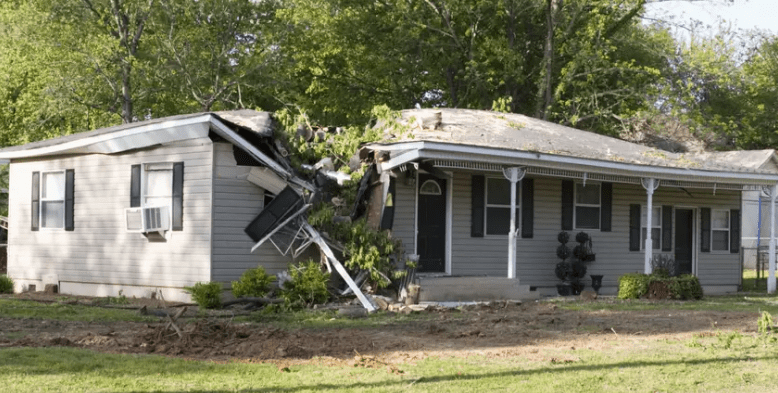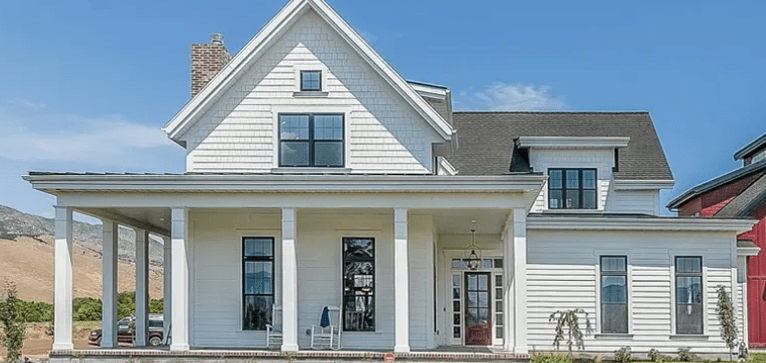Insurance is an essential part of financial planning, providing protection against unforeseen events that can result in significant financial losses. Two common types of insurance for individuals and families are homeowners insurance and renters insurance. While both offer valuable protection, they cater to different needs and come with different costs. Homeowners insurance is generally more expensive than renters insurance, but the difference in cost is justified by the level of coverage each provides. This article explores the factors influencing the cost of both types of insurance and why homeowners insurance tends to be more expensive than renters insurance.
Understanding Homeowners Insurance
Homeowners insurance is a comprehensive policy designed to protect homeowners from financial losses due to damage to their property, personal belongings, and liability claims. It is typically required by mortgage lenders as a condition for obtaining a home loan, ensuring that both the homeowner’s and lender’s investments are protected. Homeowners insurance usually covers the following:
- Dwelling Coverage: Protects the physical structure of the home, including the walls, roof, foundation, and any attached structures, against damage from perils such as fire, windstorms, hail, and vandalism. If the home is damaged or destroyed, dwelling coverage helps pay for repairs or rebuilding.
- Other Structures Coverage: Covers structures on the property that are not attached to the main house, such as detached garages, sheds, fences, and guest houses. This coverage protects these structures from the same perils as the dwelling.
- Personal Property Coverage: Protects the homeowner’s personal belongings, such as furniture, electronics, clothing, and appliances, against damage or theft. This coverage extends to items outside the home, such as belongings in a car or during travel.
- Liability Coverage: Provides protection if someone is injured on the homeowner’s property or if the homeowner accidentally causes damage to someone else’s property. This coverage includes legal defense costs and any settlements or judgments.
- Additional Living Expenses (ALE): If the home is uninhabitable due to a covered loss, ALE coverage helps pay for temporary living expenses, such as hotel stays, restaurant meals, and other costs incurred while the home is being repaired or rebuilt.

Understanding Renters Insurance
Renters insurance is a type of property insurance designed specifically for tenants who rent their living spaces, such as apartments, condos, or houses. Unlike homeowners insurance, renters insurance does not cover the structure of the building, as this is the responsibility of the landlord or property owner. Instead, renters insurance focuses on protecting the tenant’s personal belongings and providing liability coverage. Renters insurance typically covers the following:
- Personal Property Coverage: Protects the tenant’s personal belongings, such as clothing, electronics, furniture, and other household items, against damage or theft due to covered perils, such as fire, theft, vandalism, or certain natural disasters. This coverage also extends to belongings outside the rented property.
- Liability Coverage: Provides protection if someone is injured in the tenant’s rental unit or if the tenant accidentally causes damage to someone else’s property. This coverage includes legal defense costs and any settlements or judgments.
- Additional Living Expenses (ALE): If the rental unit becomes uninhabitable due to a covered event, ALE coverage helps pay for temporary living expenses, such as hotel stays, food, and other costs associated with being displaced from the rental unit.
Why Is Homeowners Insurance More Expensive Than Renters Insurance?
Several factors contribute to the higher cost of homeowners insurance compared to renters insurance. These factors include the scope of coverage, the value of the insured property, risk factors, and location.
1. Scope of Coverage
- Homeowners Insurance: Homeowners insurance provides comprehensive coverage for the structure of the home, personal belongings, and liability. It also includes coverage for additional structures on the property, such as garages and sheds. Because homeowners insurance covers the physical structure of the home and other structures, it offers more extensive protection than renters insurance, resulting in higher premiums.
- Renters Insurance: Renters insurance, on the other hand, focuses solely on protecting the tenant’s personal belongings and providing liability coverage. It does not cover the structure of the building, which is the landlord’s responsibility. Since renters insurance provides less comprehensive coverage, it typically has lower premiums.
2. Value of Insured Property
- Homeowners Insurance: The value of the property being insured significantly affects the cost of homeowners insurance. Homes can be worth hundreds of thousands or even millions of dollars, and insuring such valuable assets requires higher premiums to cover potential losses. The cost of rebuilding a home in the event of total destruction also contributes to the higher cost of homeowners insurance.
- Renters Insurance: Renters insurance covers only the tenant’s personal belongings, which are generally worth less than the entire structure of a home. As a result, the amount of coverage needed is lower, leading to lower premiums. Renters insurance typically covers personal property up to a certain limit, such as $20,000 to $50,000, depending on the policy.
3. Risk Factors
- Homeowners Insurance: Homeowners insurance premiums are influenced by various risk factors, including the age and condition of the home, the materials used in construction, the presence of safety features (such as smoke detectors and security systems), and the homeowner’s claims history. Homes in areas prone to natural disasters, such as hurricanes, earthquakes, or floods, may have higher premiums due to the increased risk of damage.
- Renters Insurance: Renters insurance is also affected by risk factors, but to a lesser extent than homeowners insurance. The primary risk factors for renters insurance include the location of the rental unit, the presence of safety features, and the tenant’s claims history. Since renters insurance does not cover the structure of the building, the risk factors are primarily related to personal property and liability.
4. Location
- Homeowners Insurance: The location of the home plays a significant role in determining homeowners insurance premiums. Homes located in areas with high crime rates, a history of natural disasters, or a lack of nearby fire departments or hydrants may have higher premiums due to the increased risk of damage or loss. Additionally, homes in high-cost areas may have higher premiums due to the higher cost of rebuilding or repairing the property.
- Renters Insurance: The location of the rental unit also affects renters insurance premiums, but the impact is generally less significant than for homeowners insurance. Renters insurance premiums may be higher in areas with high crime rates or a history of natural disasters, but since the structure of the building is not covered, the overall impact on premiums is lower.

How Much More Is Homeowners Insurance Than Renters Insurance?
The cost difference between homeowners insurance and renters insurance can vary widely based on the factors discussed above. On average, homeowners insurance is significantly more expensive than renters insurance due to the broader scope of coverage and the higher value of the insured property. Here are some general cost comparisons:
- Homeowners Insurance: According to the National Association of Insurance Commissioners (NAIC), the average annual premium for homeowners insurance in the United States was approximately $1,311 in 2020. However, this cost can vary significantly depending on the location, value of the home, and coverage limits. In high-risk areas or for high-value homes, premiums can be much higher, sometimes exceeding $2,000 to $3,000 annually.
- Renters Insurance: The NAIC reports that the average annual premium for renters insurance in the United States was around $174 in 2020. This relatively low cost is due to the limited scope of coverage and the lower value of the insured property. Renters insurance premiums can vary based on location, coverage limits, and other factors, but they generally remain affordable, ranging from $100 to $300 per year.
Why Both Types of Insurance Are Important
Despite the difference in cost, both homeowners and renters insurance provide essential protection and peace of mind. Understanding the value of each type of insurance can help individuals make informed decisions about their coverage needs.
Homeowners Insurance: Protecting a Major Investment
For homeowners, their home is often their most significant investment. Homeowners insurance protects this investment by covering the cost of repairs or rebuilding in the event of damage or destruction. It also protects personal belongings and provides liability coverage, ensuring that homeowners are not financially devastated by unexpected events.
- Comprehensive Protection: Homeowners insurance covers a wide range of perils, providing comprehensive protection for the structure of the home, personal belongings, and liability. This coverage is essential for safeguarding the financial stability of homeowners.
- Mortgage Requirement: Most mortgage lenders require homeowners to carry insurance as a condition of the loan. This requirement protects both the homeowner and the lender, ensuring that the property is covered against potential losses.
Renters Insurance: Affordable Protection for Tenants
Renters insurance offers valuable protection for tenants at an affordable cost. It covers personal belongings and provides liability coverage, helping tenants recover from unexpected events without facing significant financial hardship.
- Protection for Personal Belongings: Renters insurance covers personal belongings against damage or theft, ensuring that tenants can replace or repair their items in case of a covered loss. This coverage is particularly important for tenants with valuable possessions, such as electronics, jewelry, or furniture.
- Liability Coverage: Renters insurance provides liability coverage, protecting tenants from legal claims if someone is injured in their rental unit or if they accidentally cause damage to someone else’s property. This coverage helps tenants avoid costly legal expenses and potential judgments.
- Lease Requirement: Many landlords require tenants to carry renters insurance as a condition of the lease. This requirement protects both the tenant and the landlord, ensuring that the tenant’s belongings are covered and that liability protection is in place.
Conclusion
Homeowners insurance and renters insurance serve different purposes, but both are essential for protecting against unexpected events. Homeowners insurance is more expensive than renters insurance due to the broader scope of coverage and the higher value of the insured property. However,









47epv1
9cm3mw
chtsem